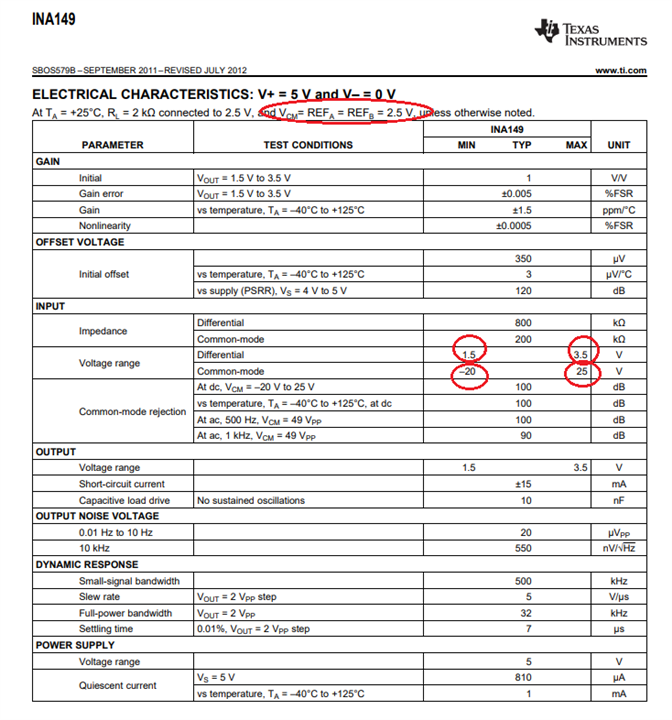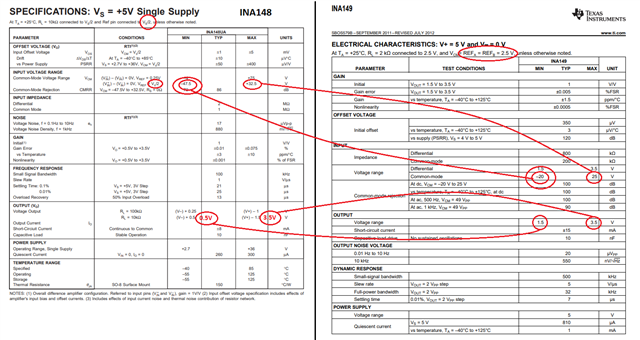Other Parts Discussed in Thread: TINA-TI, INA148
On the INA149, is it okay to ground REFa and REFb (pin 5 & pin 1) while using a single 5V supply?
This thread has been locked.
If you have a related question, please click the "Ask a related question" button in the top right corner. The newly created question will be automatically linked to this question.
You may ground the REF pins of INA149 on a single 5V supply BUT since the required output linear range is 1.5V from either rail this means that your input differential voltage (Vdiff) must be between 1.5V and 3.5V; since the internal input nodes (VM and VN - see below) must also stay 1.5V from either rail, this means that the input common-mode voltage (Vcm) linear range depends on the Vdiff - see below. Thus, for Vdiff of 2.5V the valid Vcm is from 30.25V to 72.25V, for Vdiff of 1.5V Vcm must be between 30.75V and 72.75V and for Vdiff of 3.5V Vcm must be 29.75V to 71.75V. Therefore, for Vdiff anywhere between 1.5V and 3.5V, Vcm must be between 30.75V and 71.75V.
For any other INA149 conditions, please use the attached Tina-TI tool at the bottom of the post to determine valid Vdiff/Vcm ranges.

Connecting REFA and REFB to mid-supply allows Vcm anywhere between -20V and +25V - see below.

On 5V single supply the main difference is that INA148 output voltage goes down to 0.5V above ground while INA149 is specified at 1.5V - this leads to INA148 wider negative input common-mode voltage range of -47.5V vs INA149 of -20V - see below. However, these parts are mainly meant to be used with higher supply voltage like +/-15V and under said conditions INA149 input common-mode voltage is +/-275V while INA148 Vcm range is only +/-200V.

Hi,
and I ask myself why so many people want to use a single supply voltage in these days. A bipolar supply voltage has so many advantages compared to a single supply voltage. A pseudo ground can never be as good as the good old true signal ground. Using a bipolar supply voltage isn't old-fashioned or "dino technique", no it's just the way better way to handle signals which are referenced to signal ground.
Kai